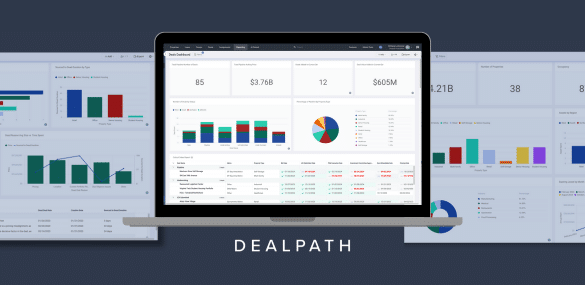It’s no secret that surging interest rates and the high cost of capital are prompting commercial real estate lenders to underwrite with caution, even as debt origination deals have become CRE’s new darling. One metric that lenders rely on to evaluate countless loan applications in their pipelines and identify risk is debt yield. While not a traditional underwriting mechanism, more lenders are incorporating it into their criteria and process.
Investors who understand why debt yield is important and how it’s calculated can better assess if the loan meets their risk/return profile. Read on to learn more about debt yield, what’s a good debt yield, and how you can use this information to help with origination decisions to avoid costly mistakes.
What is Debt Yield in Commercial Real Estate Lending? (Definition)
One of the most significant risk metrics for commercial and multifamily loans, debt yield can be determined by taking a property’s net operating income (NOI) and dividing it by the total loan amount. Lenders use this metric to determine the risk posed by a loan and how quickly it could recoup its losses if a borrower defaults.
Since it simply calculates the NOI and the loan amount, debt yield doesn’t include traditional loan parameters like interest rates, amortization periods, annual debt service, or market value. Consequently, it provides a measure of credit risk that’s less susceptible to manipulation and changing market conditions.
A debt yield can be a better way to gauge the true risk of a loan as well as quickly compare it to other loans on similar properties.
What is a Good Debt Yield?
While debt yield requirements vary, most lenders prefer 10% or higher. Keep in mind that in the eyes of the lender, the higher the percentage, the safer the loan. A lower debt yield suggests higher leverage, and therefore, higher risk for the lender, whereas a higher percentage indicates lower leverage, and therefore, lower risk.
However, the quality ultimately depends on the target risk and return profile carried by that lender. Risk-averse investors may steer closer to debt yields above 12%, while opportunistic investors may be more open to distressed debt at 7%.
How to Calculate Debt Yield (Formula)
Debt yield is a simple calculation measured by taking the property’s NOI and dividing it by the total loan amount. By examining this metric, lenders and investors can quickly and easily obtain an objective measure of risk with only the NOI and loan amount.
Debt Yield (%) = Net Operating Income / Loan Amount
Example: Debt Yield in Practice
To better understand how to calculate debt yield and leverage insights, let’s look at these two examples.
Loan 1: Consider a property with $300,000 in NOI and a loan of $3 million. In this example, the yield is 10% ($300,000 / $3,000,000 = 10%).
Loan 2: In this example, a property has $300,000 in NOI and a loan of $3.7 million. The debt yield calculation is 8.11% ($300,000 / $3,700,000 = 8.11%).
| Values | Deal #1 | Deal #2 |
| Net Operating Income | $300,000 | $300,000 |
| Loan Amount | $3,000,000 | $3,700,000 |
| Debt Yield | 10% | 8.11% |
Loan 2 has a lower debt yield, so it’s riskier within this vacuum. Both loans have the same NOI, however, the loan amount for Loan 2 is $700,000 higher than Loan 1. This equates to a wider cushion of safety for Loan 1, as the property generates the same cash flow with a lower loan amount.
Alternative Metrics that Lenders Also Consider During Evaluations
While a great indication of risk, debt yield does not paint a complete picture of an investment opportunity. In addition, lenders use several other more traditional metrics to evaluate the risk and return of a loan.
Debt Service Coverage Ratio (DSCR) measures the borrower’s ability to repay the annual debt obligations compared to the amount of NOI the property generates. However, since DSCR is based on the annual debt payment, it can be skewed by extreme interest rates and amortizations. To calculate DSCR, divide the NOI of a property by the total amount of debt obligations.
The Loan to Value (LTV) ratio is calculated by dividing the loan amount by the value of the property. Since LTV ratios depend significantly on the value of a property, this ratio is susceptible to large swings in property values. Lenders typically like to see an LTV ratio of 80% or less.
Cap rate, or the capitalization rate, also looks at NOI, but it’s based on the value of the property and is susceptible to some of the same swings as LTV. The cap rate is calculated by dividing the NOI of a property by its market value. This metric is more common in evaluating equity investments.
The commercial real estate debt yield is similar to the yield on cost, which is a similar metric for developers to assess a project based on cost and returns.
Tracking Loan Metrics in One Centralized Dashboard
As you source new debt origination deals in your pipeline, tracking real estate debt yield alongside other metrics and relevant information is vital. Quickly slicing and dicing these data points–so that you can reliably compare apples to apples with clear visibility for years to come–is critical for strengthening your firm’s competitive advantage.
Learn why CRE investors are forging a path forward with debt investments and more about the state of the market in our on-demand webinar.
Watch the Webinar




